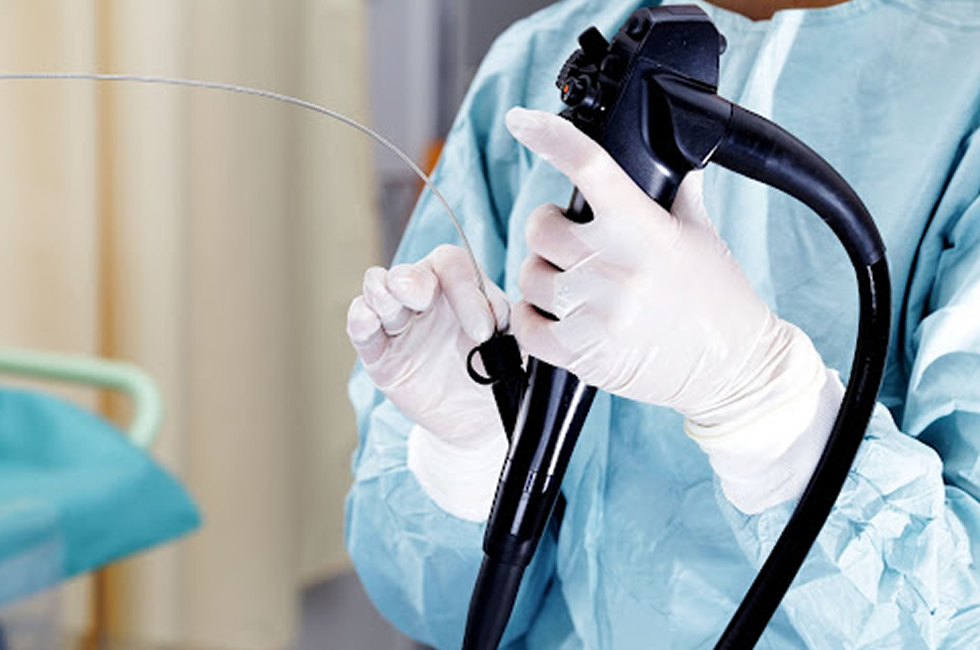Upper Endoscopy[ also known as gastroscopy, EGD, or esophago gastro duodenoscopy] is where the doctor uses an endoscope to look at the inside lining of the esophagus [food pipe], stomach and duodenum [first part of the intestine].A bendable, lighted tube about the thickness of your little finger is placed through your mouth and into the stomach and duodenum.
Why an Upper Endoscopy? To evaluate symptoms of
– Persistent upper abdominal pain.
– Nausea.
– Vomiting
– Difficulty swallowing or heartburn or passing dark black stools [Maleana].
It is an excellent method for finding the cause of bleeding from the upper gastrointestinal tract. It is more accurate than the ultrasound or barium swallow for detecting inflammation, ulcers or tumors of the esophagus, stomach and duodenum.
It can detect early cancer and can distinguish between cancerous and non-cancerous conditions by performing biopsies of suspicious areas. Biopsies are taken by using a specialized instrument to sample tissue.
These samples are then taken to the laboratory to be analyzed. A biopsy can be taken for other reasons and does not necessarily mean that cancer is suspected. A variety of instruments can be passed through the endoscope that allows the doctor to treat many abnormalities with little or no discomfort.
Your doctor can treat you upper gastrointestinal bleeding, stretch narrowed areas or remove swallowed objects. During the upper Endoscopy: you may have your throat sprayed with little a local anesthetic before the test begins and given medication through a vein to help you relax during the examination.
You will be laid on your side or back in the comfortable position as the endoscope is gently passed through your mouth and into your esophagus, stomach and duodenum.
Air is introduced into your stomach during the procedure to allow a better view of the stomach lining. The procedure usually lasts 10-15 minutes. The endoscope does not interfere with your breathing. Most patients fall asleep during the procedure; a few find it only slightly uncomfortable.
After the Endoscopy
Monitoring in the endoscopy area for 1-2 hours until the effect of the sedative has worn off. One can experience a sore throat for a day or two, may feel bloated immediately after the procedure because of the air that is introduced into your stomach. But will be able to resume diet and take routine medication after the procedure.
What implications can occur?
Endoscopy and biopsy are generally safe when performed by doctors who have had special training and are experienced in these endoscopy procedures. Complications are rare, but can include bleeding from the site of a biopsy or a tear [perforation] through the lining of the intestinal wall. Blood transfusion are rarely required. A reflection to the sedative can occur. Irritation to the vei that medications were given is uncommon, but may cause a tender lump lasting a few weeks.
It is important for you to recognize the early signs of possible complications and to contact your doctor if you notice symptoms of difficulty swallowing, worsening throat pain, chest pain, severe abdominal pain, fevers, chills or rectal bleeding of more than one half cup. Without this procedures, one’s symptoms worsen and the doctor will not be able to give you the correct treatment without knowing the correct cause of the problems.























